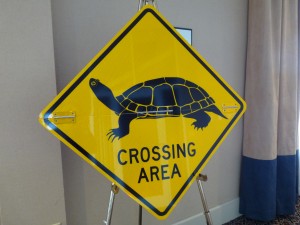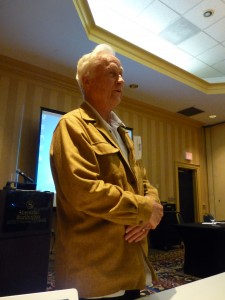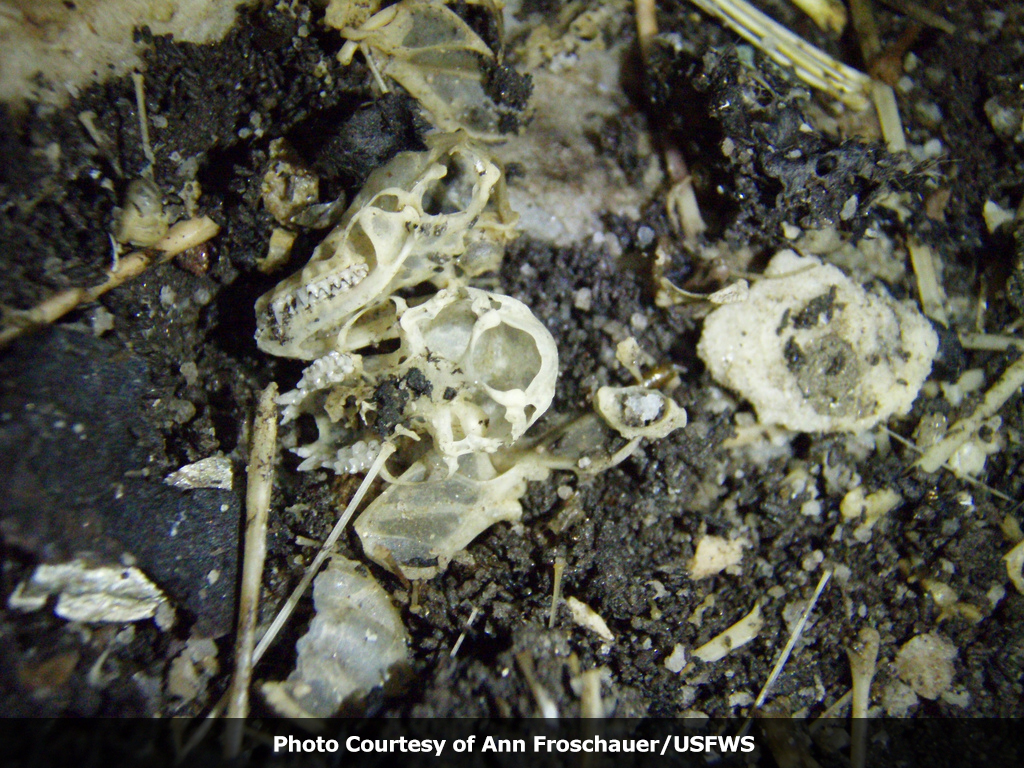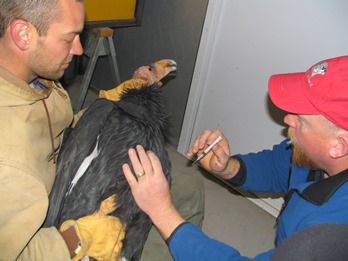 “What we did to protect animals actually protected roads,” said Vermont Agency of Natural Resources secretary Deb Markowitz at a general session at the Northeastern Transportation and Wildlife Conference this week (Sept. 21 – 24) in Burlington, Vermont. In places where culverts had been resized to allow wildlife to walk along the banks during low flow periods, the culverts have held during floods like the one caused by Tropical Storm Irene in Vermont.
“What we did to protect animals actually protected roads,” said Vermont Agency of Natural Resources secretary Deb Markowitz at a general session at the Northeastern Transportation and Wildlife Conference this week (Sept. 21 – 24) in Burlington, Vermont. In places where culverts had been resized to allow wildlife to walk along the banks during low flow periods, the culverts have held during floods like the one caused by Tropical Storm Irene in Vermont.
A documentary on the Highway Wilding project that built wildlife passages along the TransCanada Highway in Banff National Park said that the cost of hitting a moose with a vehicle averages $30,000. Hitting a deer averages over $1,000. It doesn’t take many wildlife collisions to cost-justify a wildlife crossing, the documentary said, and some highway locations are the scene of hundreds of collisions.
Photo: Camera fail. None of my photos of Markowitz speaking even made it onto my camera’s memory card. Here’s her official portrait off the Vermont Agency of Natural Resources website.

 Black racer snakes are rare in Vermont, so when highway construction was going to introduce drains with holes big enough for the snakes to fall into, the Vermont Department of Fish and Wildlife asked for a fix. Drain covers with smaller holes were not possible. So the Vermont Agency of Transportation fashioned snake-sized ladders and attached them to the drains. It turns out that black racers are excellent climbers, so it is expected that the snakes will rescue themselves if they fall into the drain. A poster on the unusual solution was presented at the Northeastern Transportation and Wildlife Conference, being held this week (Sept. 21 – 24) in Burlington, Vermont.
Black racer snakes are rare in Vermont, so when highway construction was going to introduce drains with holes big enough for the snakes to fall into, the Vermont Department of Fish and Wildlife asked for a fix. Drain covers with smaller holes were not possible. So the Vermont Agency of Transportation fashioned snake-sized ladders and attached them to the drains. It turns out that black racers are excellent climbers, so it is expected that the snakes will rescue themselves if they fall into the drain. A poster on the unusual solution was presented at the Northeastern Transportation and Wildlife Conference, being held this week (Sept. 21 – 24) in Burlington, Vermont.
 On April 10, both the Michigan Department of Natural Resources (DNR) and the Wisconsin Department of Natural Resources announced confirmation of white nose syndrome in bats in each of their states.
On April 10, both the Michigan Department of Natural Resources (DNR) and the Wisconsin Department of Natural Resources announced confirmation of white nose syndrome in bats in each of their states. It’s been a good year for lead levels in condors in Arizona and Utah. While last year saw the second worst levels on record, this year saw the lowest level in a decade, says a
It’s been a good year for lead levels in condors in Arizona and Utah. While last year saw the second worst levels on record, this year saw the lowest level in a decade, says a